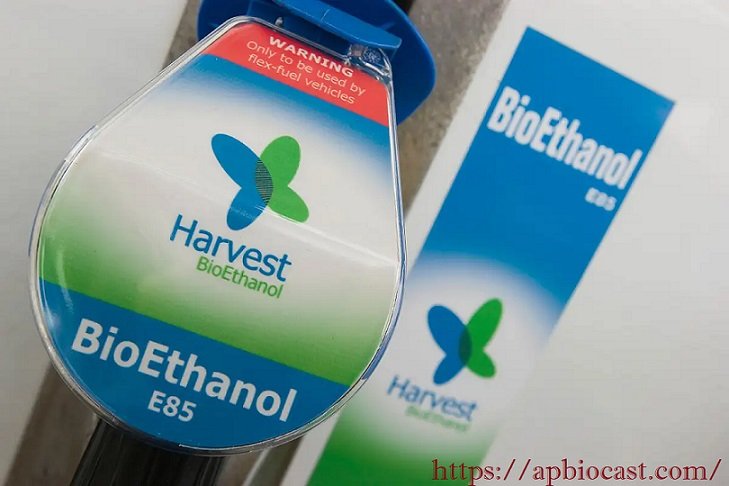Introduction
With rising concerns about climate change and dependence on fossil fuels, bio ethanol fuel has emerged as a sustainable alternative. This renewable energy source, derived from plant-based materials, offers significant environmental benefits. In this guide, we will explore everything you need to know about bio ethanol fuel, including its production, benefits, applications, and future potential.
What is Bio Ethanol Fuel?
Bio ethanol fuel is an alcohol-based renewable fuel produced from biological materials such as corn, sugarcane, wheat, and other biomass. It is commonly blended with gasoline to reduce greenhouse gas emissions and improve fuel efficiency.
How is Bio Ethanol Fuel Produced?
Bio ethanol is primarily produced through the fermentation of sugar-rich crops. The process involves several key steps:
- Feedstock Selection – Common sources include corn, sugar beets, wheat, and cellulosic materials like wood chips.
- Fermentation – Microorganisms (typically yeast) convert sugars into ethanol and carbon dioxide.
- Distillation – Ethanol is separated from water and impurities.
- Dehydration – The ethanol is purified to remove residual water.
- Blending – Bio ethanol is mixed with gasoline to create various ethanol-gasoline blends, such as E10 (10% ethanol) and E85 (85% ethanol).
Benefits of Bio Ethanol Fuel
1. Environmental Benefits
- Reduced Carbon Emissions: Bio ethanol burns cleaner than fossil fuels, reducing CO2 emissions.
- Renewable Energy Source: Made from crops that can be regrown, making it a sustainable fuel option.
- Lower Air Pollutants: Produces fewer harmful pollutants such as sulfur and nitrogen oxides.
2. Economic Advantages
- Boosts Agricultural Industry: Farmers benefit from increased demand for bio ethanol crops.
- Job Creation: The biofuel industry supports employment in farming, production, and distribution.
- Energy Independence: Reduces reliance on imported fossil fuels.
3. Performance & Efficiency
- Higher Octane Rating: Enhances engine performance.
- Reduces Engine Knocking: Improves combustion efficiency in modern engines.
- Biodegradable & Less Toxic: Safer than gasoline in case of spills.
Applications of Bio Ethanol Fuel
| Application | Description |
|---|---|
| Transportation | Used in flex-fuel vehicles and as an additive in gasoline blends. |
| Industrial Use | Utilized in the production of cosmetics, pharmaceuticals, and beverages. |
| Power Generation | Used in ethanol-powered generators for electricity production. |
| Heating | Bio ethanol fireplaces offer a clean-burning heating alternative. |
Challenges and Limitations
Despite its benefits, bio ethanol fuel faces some challenges:
- Land Use Concerns: Large-scale production can compete with food crops, impacting food security.
- Water Consumption: Requires significant water resources for crop cultivation and processing.
- Energy Balance Debate: Some argue that the energy used in production offsets its environmental benefits.
- Infrastructure Compatibility: Higher ethanol blends require engine modifications in some vehicles.
Future of Bio Ethanol Fuel
Advancements in technology aim to address these challenges. Second-generation biofuels, derived from non-food biomass (e.g., agricultural waste), offer a promising solution. Additionally, research on algae-based ethanol and synthetic biology could further enhance sustainability and efficiency.
Frequently Asked Questions (FAQ)
1. Is bio ethanol fuel safe for all vehicles?
Bio ethanol blends like E10 can be used in most modern vehicles without modifications. However, higher blends like E85 require flex-fuel vehicles designed for ethanol use.
2. How does bio ethanol impact engine performance?
Bio ethanol has a higher octane rating, improving engine performance and reducing knocking. However, it has a lower energy density than gasoline, which can slightly reduce fuel economy.
3. Can bio ethanol fuel replace gasoline completely?
While bio ethanol can be used as a substitute for gasoline in flex-fuel vehicles, infrastructure limitations and production challenges make complete replacement difficult in the short term.
4. Is bio ethanol fuel’s better for the environment?
Yes, bio ethanol reduces greenhouse gas emissions and air pollutants, making it a cleaner alternative to fossil fuels.
5. What are the main sources of bio ethanol fuel’s?
Common sources include corn, sugarcane, wheat, and cellulosic biomass like agricultural waste and wood chips.
6. What is the difference between bio ethanol and biodiesel?
Bio ethanol is an alcohol-based fuel used primarily in gasoline engines, while biodiesel is a vegetable oil-derived fuel used in diesel engines.
7. Does bio ethanol’s production affect food supply?
Large-scale ethanol production can compete with food crops, potentially impacting food prices and availability. Second-generation biofuels aim to address this issue by using non-food biomass.
8. Can bio ethanol fuel’s be used for home heating?
Yes, bio ethanol fireplaces provide a clean and efficient heating alternative without producing smoke or harmful emissions.
Conclusion
Bio ethanol fuel’s presents a viable path toward a greener future by reducing emissions, supporting the economy, and offering a renewable alternative to fossil fuels. With continued advancements, it holds great potential in the global transition to sustainable energy.
Read More Also: AP Watch: The Ultimate Guide to Audemars Piguet Watches

Leave a Reply